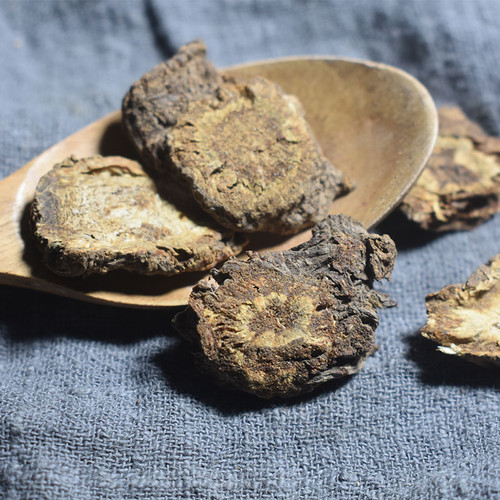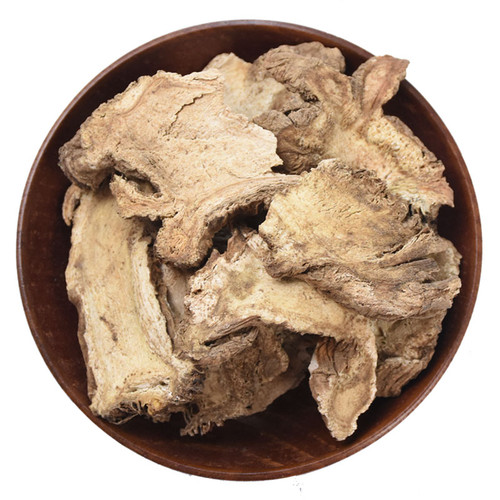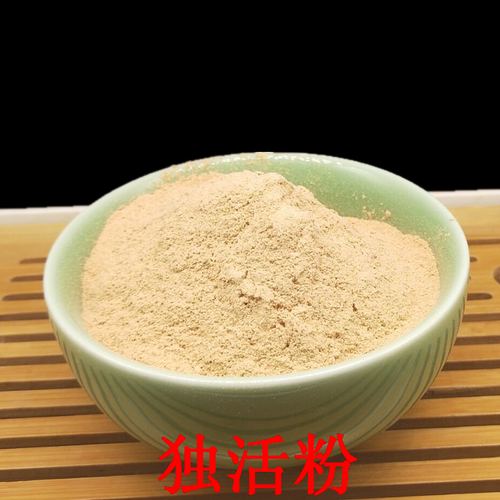Product Overview
Parts used: Dried rhizome and root
TCM category: Warm/Acrid herbs that release the Exterior
TCM nature: Warm
TCM taste(s): Bitter Pungent
Meridian affinity: Bladder Kidney
Scientific name: Notopterygium incisum or Notopterygium forbesii
Use of notopterygium roots (Qiang Huo) in TCM
Please note that you should never self-prescribe TCM ingredients. A TCM ingredient is almost never eaten on its own but as part of a formula containing several ingredients that act together. Please consult a professional TCM practitionner, they will be best able to guide you.
Preparation: Removes impurities, soak in water, cut into sections and dry
Dosage: 6 - 12 grams
Main actions according to TCM*: Relieves the Exterior and disperses Cold and Dampness. Relieves Wind-Damp-Cold painful obstruction. Directs Qi to the Greater Yang (Tai Yang) channel and the Governing Vessel.
Primary conditions or symptoms for which notopterygium roots may be prescribed by TCM doctors*: Common cold Headache Rheumatism Arthralgia Rheumatoid arthritis Back pain
Contraindications*: This herb should not be used by those with Yin or Blood Deficiency conditions or arthritis caused by Blood Stagnation.
Common TCM formulas in which notopterygium roots are used*:
For rheumatism, muscular pains and spams or lumbago combine notopterygium roots with turmeric (Jiang Huang), milkvetch roots (Huang Qi), dong quai (Dang Gui), red peony roots (Chi Shao), saposhnikovia roots (Fang Feng), fresh ginger (Sheng Jiang), liquorice (Gan Cao) and jujube dates (Da Zao).
For Cold Wind Dampness diseases associated with headaches and arthritic and rheumatic conditions, especially of the upper back and shoulders combine notopterygium roots with saposhnikovia roots (Fang Feng) and turmeric (Jiang Huang).
For severe colds, flu or upper respiratory tract infections combine notopterygium roots with honeysuckle flowers (Jin Yin Hua), forsythia fruits (Lian Qiao), platycodon roots (Jie Geng), greater burdock fruits (Niu Bang Zi), wild mint (Bo He), fermented soybeans (Dan Dou Chi), lophatherum herbs (Dan Zhu Ye), common reed rhizomes (Lu Gen), liquorice (Gan Cao) and woad roots (Ban Lan Gen).
Key TCM concepts behind notopterygium roots (Qiang Huo)'s properties
In Traditional Chinese Medicine (TCM), notopterygium roots are plants that belong to the 'Warm/Acrid herbs that release the Exterior' category. Herbs that release the Exterior aim to to treat the early stages of diseases that affect the upper respiratory tract, the eyes, the ears, the nose, the throat or the skin. TCM believes that External diseases such as colds or allergies can only invade the body if the External environment overwhelms our Wei Qi (the TCM version of the immune system). In order to counteract this invasion Warm/Acrid herbs aim to induce sweating by increasing the flow of sweat to our capillary pores. The belief is that this will expel the disease from the body and stop it from invading further.
As suggested by its category notopterygium roots are plants that are Warm in nature. This means that notopterygium roots tend to help people who have too much "cold" in their body, although with less effect than a plant that would be Hot in nature. Balance between Yin and Yang is a key health concept in TCM. Those who have too much cold in their body are said to either have a Yin excess (because Yin is Cold in nature) or a Yang deficiency (Yang is Hot in Nature). Depending on your condition notopterygium roots can help restore a harmonious balance between Yin and Yang.
Notopterygium roots also taste Bitter and Pungent. The so-called "five elements" theory in Chinese Medicine states that the taste of TCM ingredients is a key determinant of their action in the body. Bitter ingredients like notopterygium roots tend to have a cleansing action on the body by clearing heat, drying dampness and promoting elimination via urination or bowel movements. On the other hand Pungent ingredients tend to promote the circulations of Qi and body fluids. That's why for instance someone tends to sweat a lot when they eat spicy/pungent food.
The tastes of ingredients in TCM also determine what organs and meridians they target. As such notopterygium roots are thought to target the Bladder and the Kidney. In TCM the impure water collected by the Kidneys that cannot be used by the body is sent to the Bladder for storage and excretion as urine. The Kidneys do not only regulate the urinary system but also play a key role in the reproductive system and the growth and aging process of the body.










